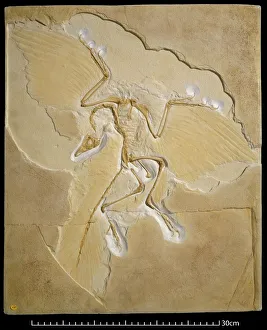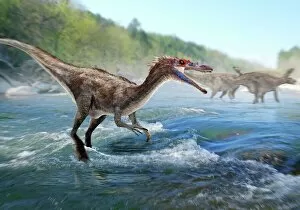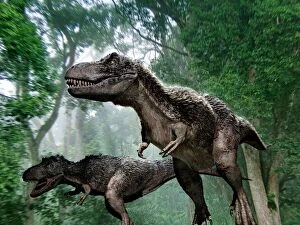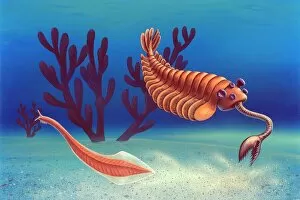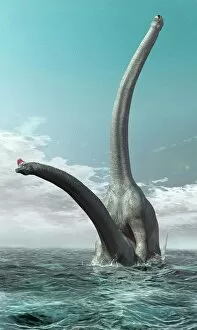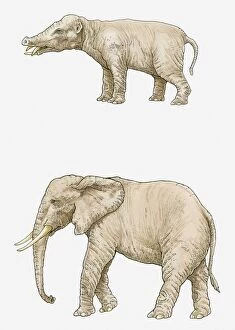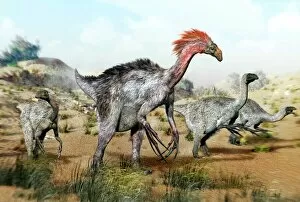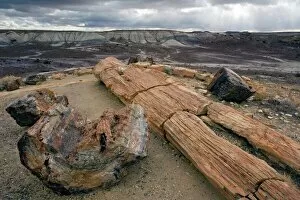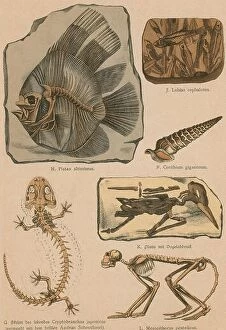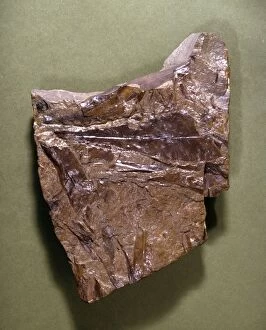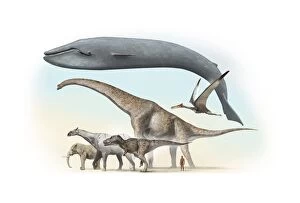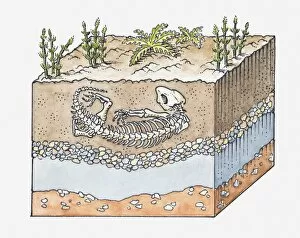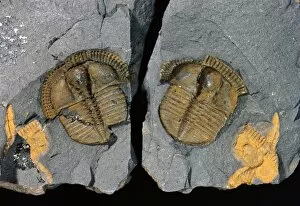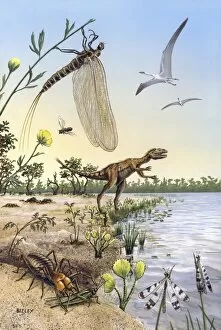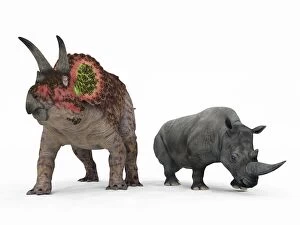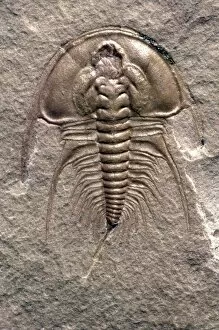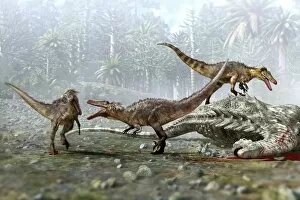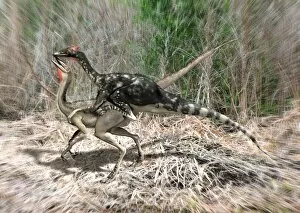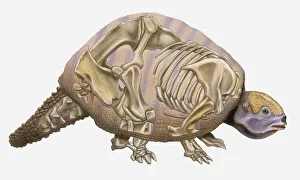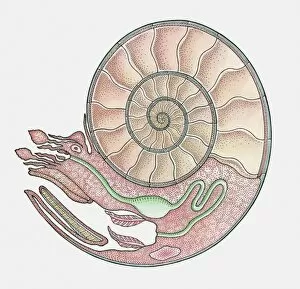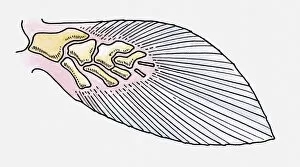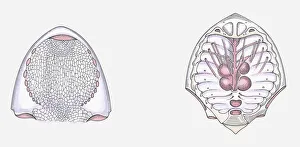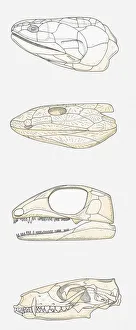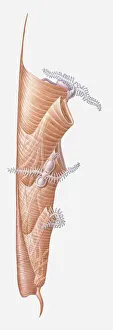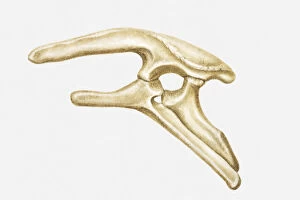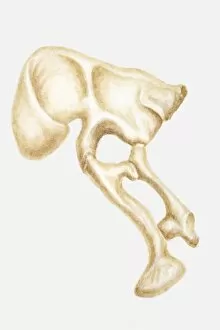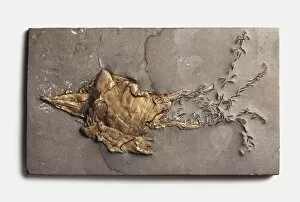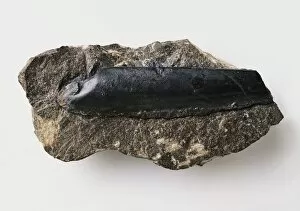Palaeobiology Collection
"Unveiling the Secrets of Ancient Life: A Journey into Palaeobiology" Step back in time and witness the incredible world of palaeobiology
All Professionally Made to Order for Quick Shipping
"Unveiling the Secrets of Ancient Life: A Journey into Palaeobiology" Step back in time and witness the incredible world of palaeobiology, where fossils hold the key to unraveling Earth's ancient mysteries. From the majestic Tyrannosaurus rex dinosaurs engaging in a mesmerizing mating dance to the exquisitely preserved Archaeopteryx fossil, Berlin specimen C016 / 5071, every discovery brings us closer to understanding our prehistoric past. Delve into the realm of Baryonyx dinosaurs, with their fearsome claws and aquatic lifestyle that sets them apart from their relatives. Marvel at Cerapod dinosaurs as they tower over a rhino, showcasing nature's diverse evolutionary paths. Witness Sauroposeidon dinosaurs engaging in an enchanting courtship ritual that echoes through time. Meet Stephen Gould, a renowned US palaeontologist whose groundbreaking research revolutionized our understanding of evolution. His contributions continue to inspire generations of scientists today. Compare Phiomia, an Oligocene Gomphothere from yesteryears, with its present-day counterpart - the African elephant (Loxodonta africana). Discover how these magnificent creatures have evolved over millions of years. Encounter Therizinosaurus dinosaurs with their enigmatic long claws that remain shrouded in mystery. Feel awe-struck by the sheer power and dominance exuded by Tyrannosaurus rex - kings among all prehistoric predators. Transport yourself back to Cambrian times through breathtaking artwork depicting bizarre and fascinating creatures that once roamed primordial seas. Admire petrified wood as it stands as a testament to ancient forests frozen in stone for eternity. Immerse yourself in captivating artwork portraying prehistoric cave bears - formidable beasts who once ruled Europe's wilderness alongside early humans. Their existence serves as a reminder of our shared history on this planet.


